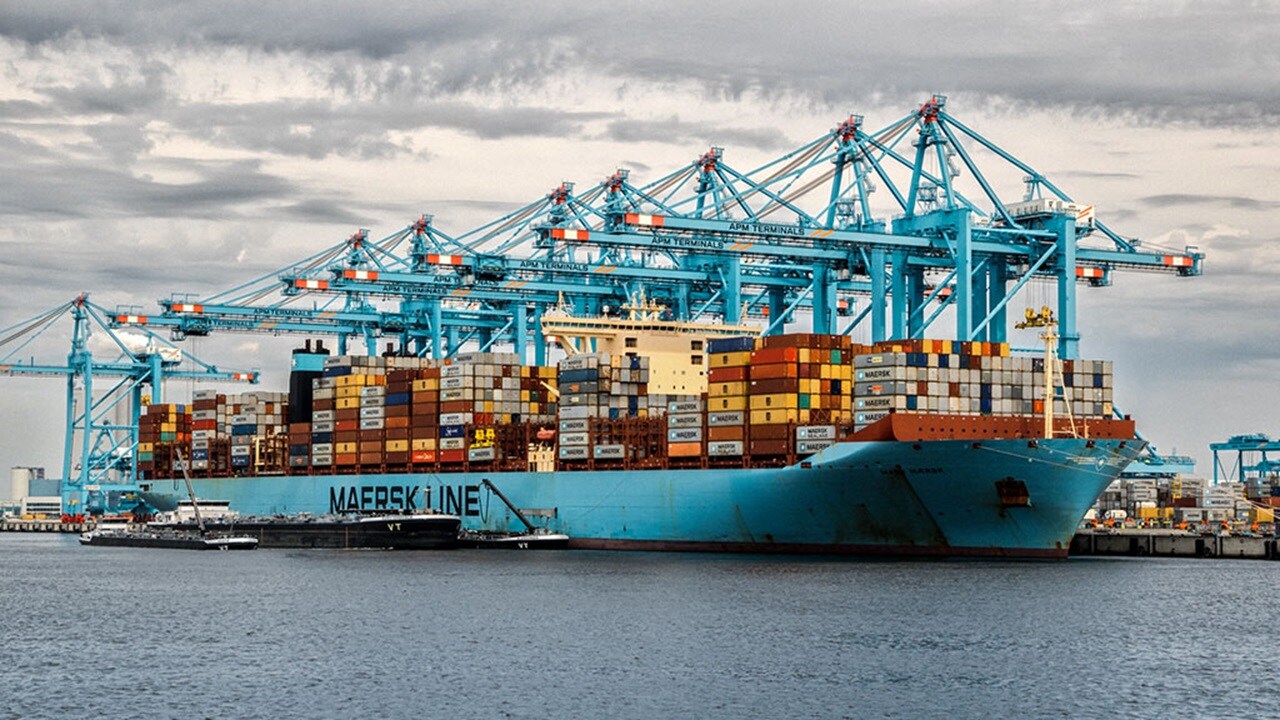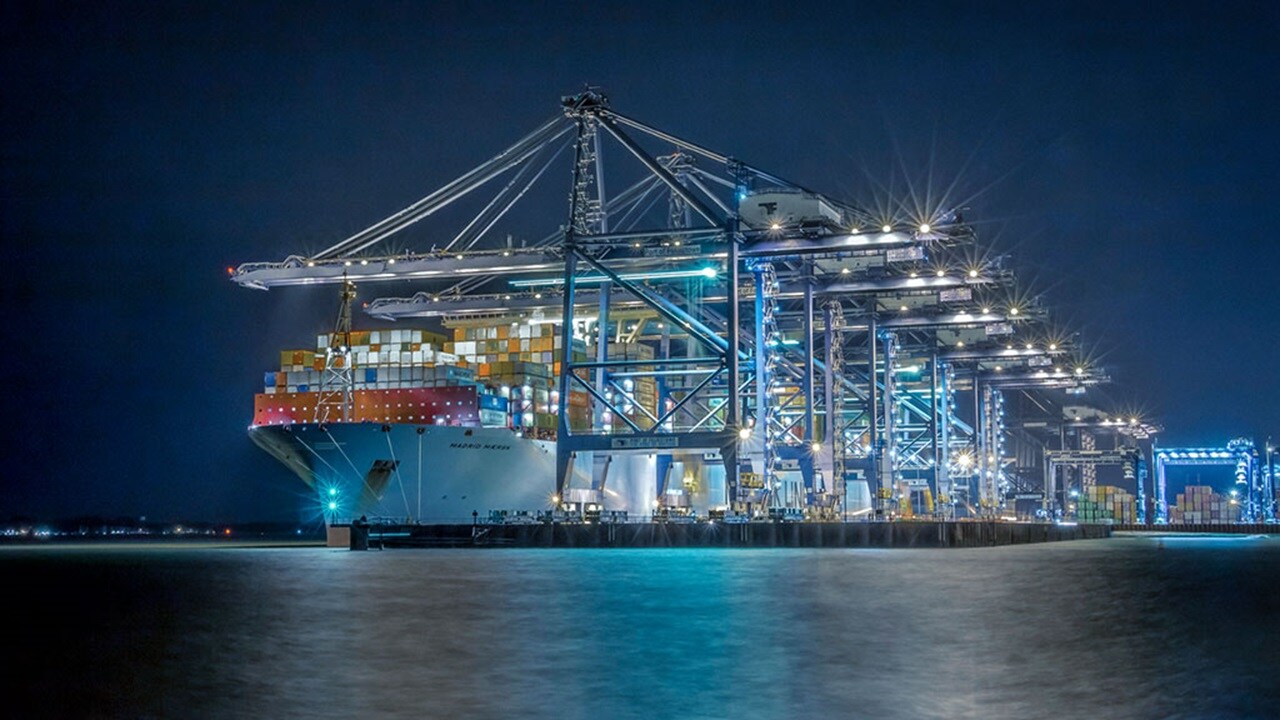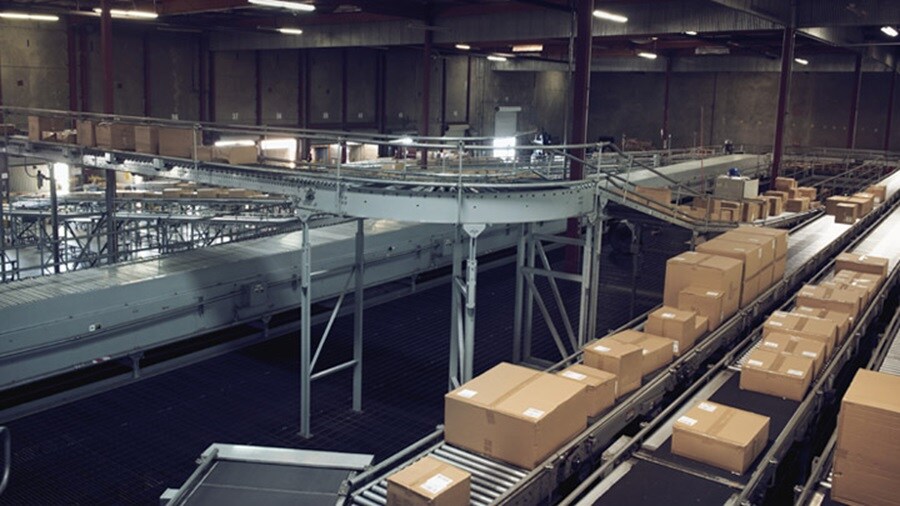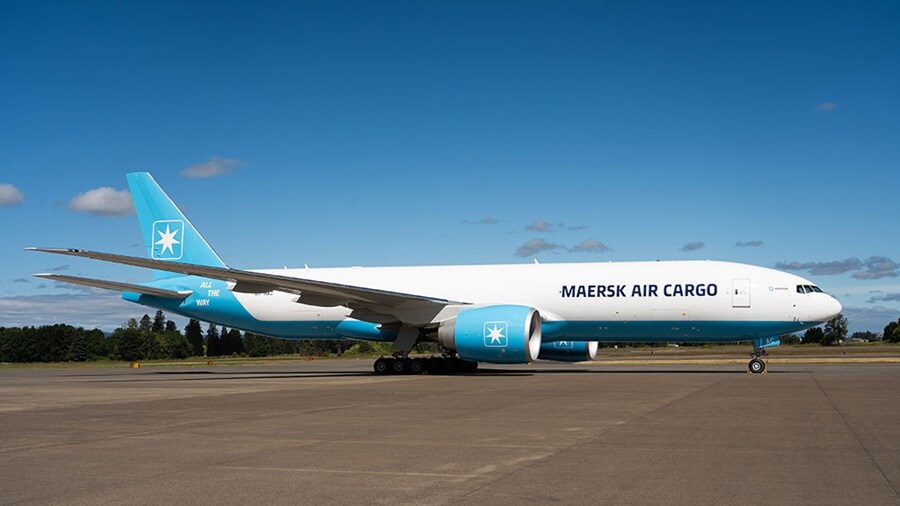Topic of the month: The power of flexibility in Supply Chain Management
In today's dynamic business environment, supply chains face constant challenges. Companies must find ways to remain agile and responsive to market fluctuations and unexpected disruptions. But what exactly does flexibility in the supply chain entail? How can it benefit businesses, and what steps can companies take to integrate this flexibility into their processes? This topic of the month will explore these questions, providing insights into the concept of supply chain flexibility and its benefits in today's fast-paced and ever-changing environment.
What is flexibility within the supply chain?
Supply chain flexibility refers to the ability of the supply chain to adapt quickly and efficiently to changes in production, materials purchases, and transportation of cargo.
Unlike traditional supply chain management, which often operates with a rigid structure, flexible supply chain management allows for rapid adjustments in response to various challenges and disruptions. This adaptability can make a significant difference in maintaining operational efficiency and meeting market demands.
Unlike rigid, traditional supply chain management, a flexible approach allows companies to:
- Modify Production Levels: A flexible supply chain can ramp up and scale down production as needed when demand fluctuates.
- Adapt Raw Material Purchases: Companies reduce dependency on a single supplier by diversifying suppliers and maintaining alternative sources.
- Adjust Transport Capacity: Flexibility ensures timely delivery, whether rerouting shipments or using different modes of transportation.

Benefits of being flexible:
The ability to adapt swiftly to changing market conditions, customer demands, and unforeseen disruptions can significantly enhance a company´s resilience and competitiveness. Flexible supply chains enable businesses to respond proactively to challenges, optimize operations, and seize new opportunities, ensuring continuity and growth. This section delves into the benefits of supply chain flexibility, illustrating how it can drive efficiency, innovation, and other advantages in the global marketplace.
Here are some advantages of incorporating flexibility into the supply chain:
- Cost savings: By diversifying sources for the same parts or materials, companies can avoid overreliance on a single supplier. This not only helps negotiate better prices but also ensures continuity in case of supply chain disruptions.
- Responsiveness: Flexible supply chains enable companies to quickly adapt to shifts in customer preferences and market conditions, helping them stay competitive and responsive to consumer needs.
- Resilience: flexibility allows for rapid response to unexpected events such as natural disasters, political instability, or sudden market changes. This minimizes operational downtime and potential losses.
- Customer satisfaction: Meeting customer expectations requires responsiveness. Flexible logistics ensure timely deliveries, personalized services, and seamless experiences.

Implementing flexibility
Implementing flexibility in the supply chain processes is essential for businesses aiming to navigate today's complex and unpredictable market environment. Companies can significantly boost their agility and resilience by incorporating strategic measures such as enhancing visibility, diversifying the supplier base, embracing digitalization, and developing robust contingency plans. These steps not only enable firms to respond more effectively to disruptions but also create opportunities for innovation and efficiency. In this section, we will explore each of these strategies in detail, providing insights into how they can transform supply chain management and fortify organizational success.
Companies can enhance their supply chain flexibility through the following steps:
- Visibility: It is crucial to ensure transparency across the entire supply chain. Advanced tracking and monitoring systems can provide real-time data, helping companies anticipate and react to changes swiftly.
- Diversification of supplier base: Relying on multiple suppliers for key materials and components reduces the risk associated with supply chain disruptions. It also provides alternative options in case of supplier failure.
- Digitalization: Leveraging digital tools and technologies can streamline supply chain operations. Automation, data analytics, and artificial intelligence can optimize processes, predict trends, and improve decision-making.
- Develop contingency plans: Preparing for potential disruptions with well-thought-out contingency plans ensures that companies can maintain operations under adverse conditions. Regularly reviewing and updating these plans is also essential.
Companies should also take into consideration some strategies such as:
- Technology adoption: Invest in supply chain management software, real-time tracking, and predictive analytics. These tools enhance visibility and decision-making.
- Collaboration: Partner with suppliers, carriers, and distributors. Collaborative relationships enable faster problem-solving and risk mitigation.
- Multi-channel distribution: Diversify distribution channels (e.g., e-commerce, brick-and-mortar stores) to reach customers efficiently.

Challenges in implementing flexibility:
While advantageous, implementing flexibility in supply chain processes is not without its challenges. One major obstacle is the reliance on third-party providers. Establishing trust and ensuring these partners uphold a consistent customer experience aligned with the brand requires meticulous selection and ongoing management. Additionally, cost management poses a significant challenge. Though beneficial for their adaptability, flexible resources often come at a higher price than dedicated, lean-optimized resources. Companies must strike a delicate balance between leveraging these flexible options and maintaining profitability. In this section, we will delve into these primary challenges and explore strategies to overcome them.
Ensuring the successful implementation of supply chain flexibility.
- Reliance on third-party logistics providers (3PLs): Building trust and ensuring that 3PLs deliver a consistent customer experience with the brand is essential. Companies must carefully vet and choose their logistics partners.
- Cost management: While flexible resources can be more expensive than dedicated ones optimized through lean approaches, they provide the advantage of being used only when necessary. Companies must balance these costs to maintain profitability.
- Balancing act: Striking the right balance between fixed assets and dynamic processes can be tricky. Overreliance on either end can lead to inefficiencies.
- Change management: employees and stakeholders need to adapt to new processes. Change management is critical.
In an ever-evolving business landscape, flexibility is not a luxury but a necessity. Companies that embrace it will thrive, while those resistant to change risk falling behind. By implementing flexible supply chains, organizations can navigate uncertainties and deliver value to customers. To know more, read how do you increase supply chain velocity along with flexibility and agility.
Ocean updates

| Trade lane | Comments |
|---|---|
|
Trade lane
North America to Intra-Americas
|
Comments
The WCCA2 service port swap from Los Angeles to Long Beach started late in June.
Haiti is now open for bookings subject to an Emergency Risk Surcharge. |
|
Trade lane
Intra-America to Caribbean
|
Comments
Haiti is now open for bookings subject to an Emergency Risk Surcharge.
Caucedo - Haiti Feeder is open for bookings. |
|
Trade lane
East Coast of South America to Intra-Americas
|
Comments
As a consequence of strong market demand, services to West Coast South America, the Caribbean and Gulf, and the US East Coast are running full. A Peak Season Surcharge has been announced for all IAM destinations (except MERCOSUR) from August 1st. A new UCLA temporary proforma has been announced as a tentative improvement to service rotation. BR Northeast fruit season to US East Coast will start in mid-August.
|
Main port status
In the ECSA region, terminals experiencing waiting times of more than one day are grappling with challenges such as port congestion, diminished productivity, and strikes.
In the HUB CARPAC region, terminals expect waiting times of more than 2 days for vessels out of the berthing window, vessels that arrive on time won't be impacted.
In the CARPAC region, the terminal at Manzanillo (Mx) is particularly impacted by port congestion.
Furthermore, Hurricane Beryl could affect the Central America and Gulf of Mexico regions and disrupt operations for more than a day.
The NAM region's most impacted terminals are Newark APMT, Norfolk, Miami - POMTOC, Freeport, Oakland, and Vancouver. The general reasons for the increased waiting times across these terminals include port congestion, holidays, weather conditions, and infrastructure upgrades. Please note that the specific impact and reasons can vary from terminal to terminal.

Port status
| Less than 1 Day | 1-3 Days | 4 - 7 Days | |
|---|---|---|---|
|
Latin America
|
Less than 1 Day
ECSA: Salvador, Buenos Aires, Montevideo, Manaus, Suape, Pecem, Rio Janeiro, Imbituba, Sepetiba, Itajai, Navegantes, Rio Grande, Zarate, Rosario, Mar del plata, S Antonio Este, P Madryn, P Deseado, Ushuaia, Vitoria, VILA DO CONDE
HUB CARPAC: Balboa, PSA Rodman, Manzanillo-PA, CCT, Cristobal, Cartagena CARPAC: Buenaventura, Moin, Quetzal, Acajutla , Turbo, Santa Marta, La Guaira, Puerto Cabello, Lazaro Cardenas,Mx, Guayaquil/Contecon, Guayaquil/TPG, Puerto Bolivar, Posorja, Callao/ APMT, Callao/ DPW, Paita, Pisco, Arica, Iquique - ITI, Mejillones-PAG, Antofagasta-ATI, Coquimbo-TPC, Valparaiso-TPS, San Antonio - STI/DPW, San Vicente - SVTI |
1-3 Days
ECSA: Santos Brasil (Santos), Itapoa, Bahia Blanca
CARPAC: San Lorenzo, Corinto, Caldera, Caucedo, Rio Haina, San Juan, Puerto Barrios, Sto Tomas de Castilla, Puerto Cortes, Big Creek,Veracruz, Altamira, Progreso, Kingston, Cuba, Manzanillo,Mx |
4 - 7 Days
ECSA: BTP (Santos), Paranagua
|
|
Rest of World
|
Less than 1 Day
NAM: Montreal, Halifax, Newark PNCT, Baltimore, Philadelphia, Wilmington, Jacksonville, Port Everglades, Charleston, North Charleston, Savannah, Houston, New Orleans, Mobile, Tampa, Long Beach, Los Angeles, Tacoma, Seattle, Prince Rupert, Dutch Harbor, Kodiak.
APA: New Zealand: Nelson, Timaru, Port Chalmers Australia, Patrick (FRE, MEL, BNE, SYD) / DPW (BNE, SYD, FRE) FEA: Ningbo Beilun Container Terminal Phase 4: CNNPOJ4 Busan new port terminal Co.ltd: KRBUSPN Maersk Yokohama terminal: JPYOKMY Xiamen Songyu Container Terminal: CNXIMSY NEU: No Waiting time reported SEU: No Waiting time reported |
1-3 Days
NAM: Newark APMT, Norfolk, Miami - POMTOC, Freeport, Oakland, Vancouver
APA: New Zealand: Auckland, Lyttelton, Tauranga (late vessels) Australia: Patrick (off window vessels at FRE, MEL, SYD, BNE), DPW (off-window vessels at BNE, SYD, MEL, FRE), MEL VICT, ADL FEA: Qingdao Qianwan Container Terminal: CNTSTQQ Yangshan, SGH Shengdong Terminal: CNSGHY1 Shanghai Guan Dong Container Trml Branch: CNSGHY3 Shanghai Shang Dong Container Trml Branch: CNSGHY4 Shanghai East Container Terminal: CNSGHCT Chiwan Container Terminal: CNIWNCT Yantian Container Terminal: CNYATCT |
4 - 7 Days
APA: New Zealand, Napier
|

Highlights
Build a supply chain that matches the pace of your business
Ever-changing customer needs require businesses to be resilient and having access to strategically located warehouses goes a long way in establishing a strong global and regional presence. With facilities that receive, store, process and dispatch cargo quickly, you can build flexibility and resilience throughout your supply chain.

Maersk strengthens logistics presence in Colombia with new container logistics centre in Bogota
Maersk reinforces its presence in Colombia with the inauguration of a container logistics centre with a total area of 44,000 m2 in the municipality of Tocancipa, strengthening its commitment to increase its logistics footprint in Colombia. The logistics centre is part of the planned expansions in the country with the purpose of offering greater warehousing and logistics solutions to customers seeking agility and flexibility in their supply chains.

Maersk customers will benefit from the delivery of the first Boeing 777F
Today, Maersk Air Cargo (MAC) took delivery of its first of two new Boeing 777F. It’s the first Boeing 777 owned by a Danish airline. The hand-over was celebrated at Boeing’s headquarters in Seattle, USA. Maersk Air Cargo is a part of the global integrator of logistics, A.P. Moller – Maersk (Maersk). The arrival of Maersk’s first Boeing 777F at it’s home airport Billund in Denmark is planned for Saturday, 13 July.
Useful links
To sign up for the Maersk Latin America customer newsletter, click here and update your preferences when prompted via email.
Check Maersk market updates from across other regions by clicking here.
Anything you need, we’re here to help
I agree to receive logistics related news and marketing updates by email, phone, messaging services (e.g. WhatsApp) and other digital platforms, including but not limited to social media (e.g., LinkedIn) from A. P. Moller-Maersk and its affiliated companies (see latest company overview). I understand that I can opt out of such Maersk communications at any time by clicking the unsubscribe link. To see how we use your personal data, please read our Privacy Notification.
By completing this form, you confirm that you agree to the use of your personal data by Maersk as described in our Privacy Notification.
